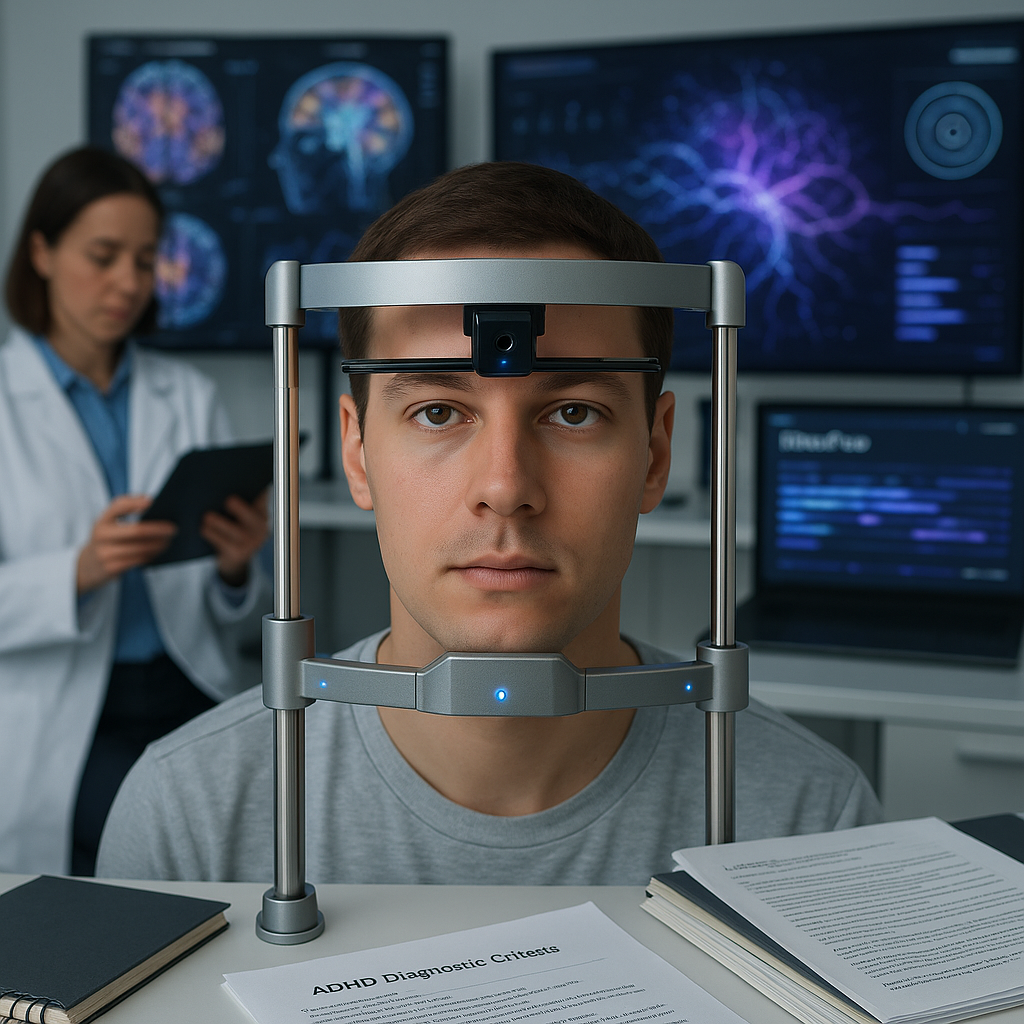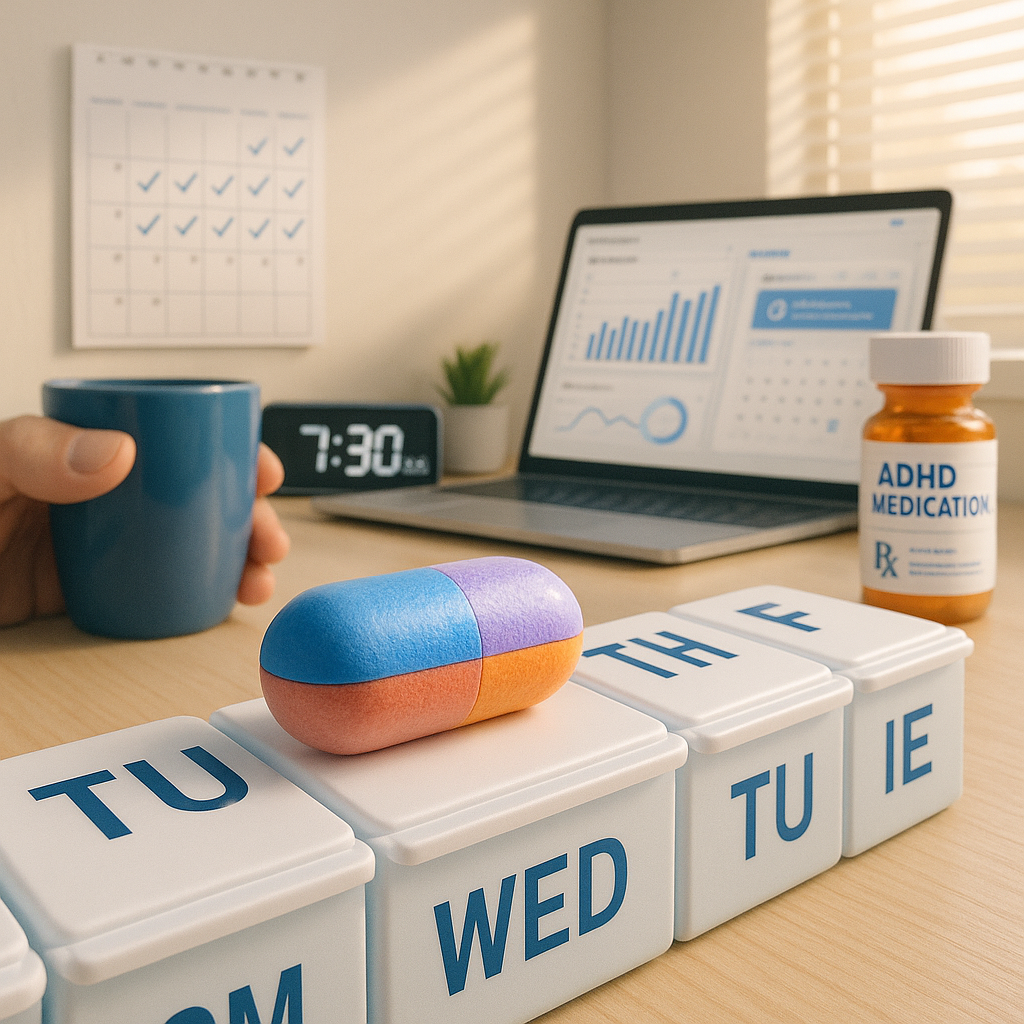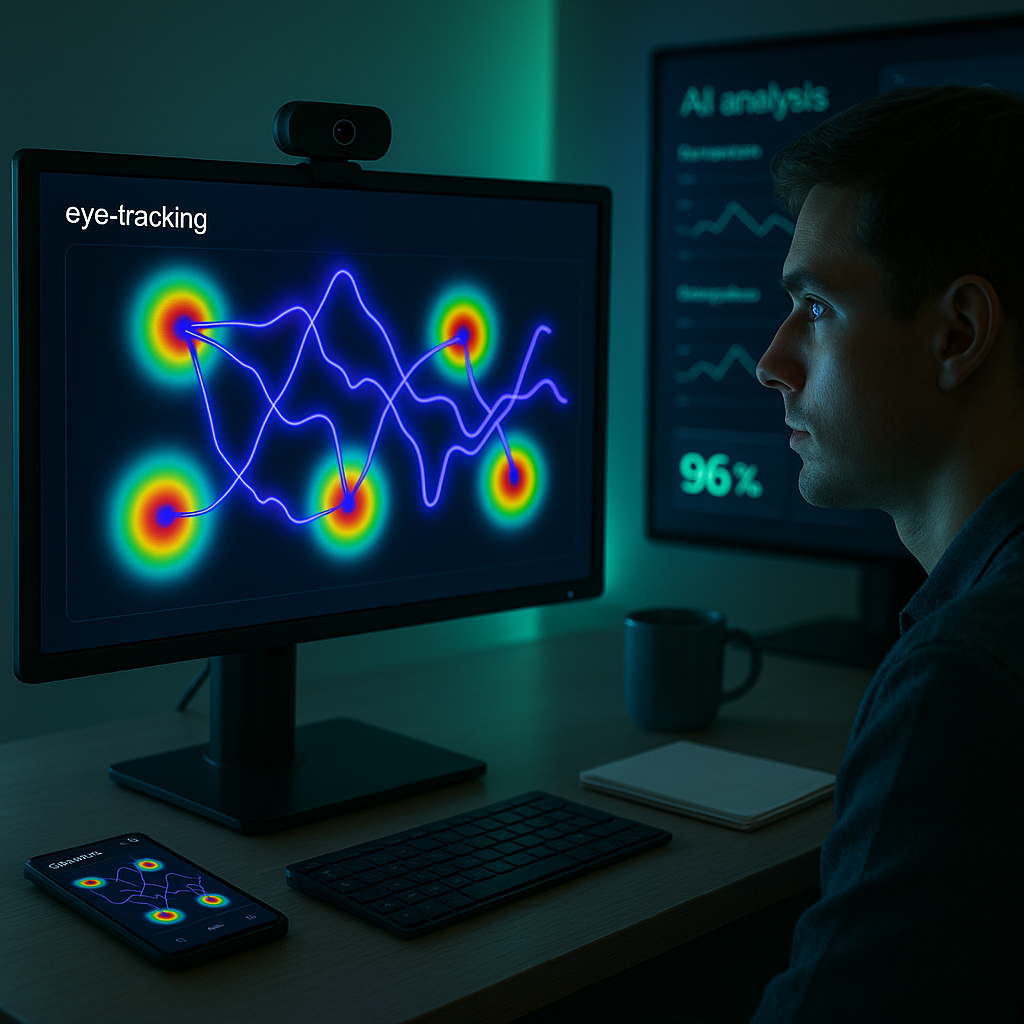Key Takeaways
- A new study reports an AI model now detects adult ADHD with 90% accuracy using visual processing.
- The Press Review for 2 November 2025 highlights diagnostic gaps for women and introduces new practical tools supporting neurodivergent professionals.
- Top story: AI system identifies ADHD in adults with high accuracy using visual cues.
- Women are diagnosed with ADHD on average five years later than men, according to recent findings.
- A research-backed toolkit has launched to help adults with ADHD strengthen daily focus.
- ADHD-friendly workflows are being adopted in business settings to reduce overwhelm for neurodivergent professionals.
Introduction
On 2 November 2025, a new artificial intelligence model capable of detecting adult ADHD with 90% accuracy through visual processing leads developments in ADHD news and research. New data reveals that women typically receive an ADHD diagnosis five years later than men, underscoring ongoing gaps and practical advances in supporting neurodivergent adults in both clinical and work settings.
Top Story: AI Visual Processing Model Delivers Breakthrough in ADHD Detection
Researchers at Stanford University have developed an artificial intelligence model that detects ADHD with over 90% accuracy using visual processing patterns. The technology analyzes subtle eye movements during cognitive tasks, identifying responses unique to individuals with ADHD. Lead researcher Dr. Maya Chen stated that the non-invasive approach could transform diagnosis by providing objective biomarkers.
The AI model, trained on data from more than 5,000 participants, distinguishes ADHD subtypes by identifying visual attention patterns often missed by traditional assessments. Dr. Chen explained that the approach does not rely on subjective reporting or behavioral observation alone. The system can potentially identify ADHD in under 15 minutes, compared to traditional assessments that may take months.
Clinical trials at five major medical centers validated the technology’s accuracy across diverse populations, including previously underdiagnosed groups. The research team emphasized that the system shows minimal bias across gender, racial, and socioeconomic factors. Historically, these have influenced diagnosis rates.
The FDA has fast-tracked approval. Clearance for clinical use is expected by mid-2026. Stanford Medical Center plans to implement the technology in its neurodevelopmental clinic beginning in January 2026.
Also Today: Gender Disparities in ADHD Research
Persistent Underrepresentation of Women
New analysis published in the Journal of Attention Disorders shows that women remain significantly underrepresented in ADHD research. Only 27% of participants in major ADHD studies from 2020 to 2025 were female. This disparity continues despite growing evidence that ADHD often presents differently in women, with more internalized symptoms rather than visible hyperactivity.
A metastudy of 243 peer-reviewed ADHD research papers found that studies published in 2025 still display minimal improvement in gender balance. Dr. Samantha Rodriguez, the study’s principal investigator at Columbia University, stated that research continues to reflect male presentation patterns, perpetuating diagnostic oversights.
The gap in research has led to diagnostic delays averaging 7.9 years longer for women than for men with similar symptom severity. In response, the National Institutes of Health announced new funding requirements. All ADHD research receiving federal grants must include gender-balanced cohorts beginning in 2026.
Masking Behaviors Complicate Diagnosis in Women
A complementary study from University College London identified masking behaviors that contribute to ADHD going unrecognized in women and girls. Researchers documented how social camouflaging, excessive preparation, and compensatory organization often obscure symptoms from clinicians.
According to the study, 78% of women with ADHD reported intentionally creating elaborate systems to appear neurotypical at work or socially. Lead researcher Dr. James Morton stated that these behaviors are mentally exhausting and contribute to higher rates of anxiety and burnout.
To improve identification, researchers piloted a new screening tool for masking behaviors in 12 diagnostic centers across North America. Early results indicate a 43% increase in identification of ADHD in women during preliminary testing.
Also Today: New Practical Tools and Resources
Strength-Based Workplace Accommodations Show Positive Outcomes
A two-year study across 50 Fortune 500 companies found that strength-based accommodations outperform deficit-management strategies for neurodivergent employees. Companies using these supports achieved 47% higher retention rates and 32% higher reported job satisfaction among neurodivergent staff.
Research from Harvard Business School observed that restructuring roles around cognitive strengths resulted in a 28% productivity increase for ADHD team members. Organizational psychologist Dr. Rebecca Johnson explained that businesses are shifting from trying to “fix” deficits to leveraging employees’ natural strengths.
Effective accommodations included flexible schedules aligned with focus periods, reduced meetings in favor of asynchronous communication, and project-based rather than time-based productivity measures. Companies employing these strategies reported lower disability leave costs and improved innovation metrics.
Digital Time Management System Supports Executive Function
A digital time management system designed for ADHD brains, TimeFlow, demonstrated strong results in a randomized controlled trial with 1,200 adults. The app incorporates neuroscience-based strategies for time perception and executive functioning.
Unlike typical productivity tools, TimeFlow addresses time blindness and task initiation with visual timelines, body-doubling features, and personalized dopamine-based reward systems. Participants using TimeFlow for three months saw a 38% reduction in missed deadlines and a 42% decrease in self-reported time management stress.
Dr. Michael Rivera, neuroscientist and lead developer, stated that TimeFlow stands out for being designed around ADHD-specific needs. The app will become more widely available following further refinement based on study user feedback.
What to Watch: Upcoming Dates and Events
- 14 November 2025: International ADHD Federation hosts expert panel, “Redefining Success: Strength-Based Approaches to ADHD Management,” at the annual conference in Toronto.
- 21 November 2025: ADHD Innovators Consortium launches a comprehensive workplace accommodation toolkit at the Neurodiversity in Business Summit in Chicago.
- 30 November 2025: Deadline for submissions to the Global ADHD Research Initiative’s special issue on gender-inclusive diagnostic methods.
- 7 December 2025: Public comment period closes on proposed DSM-5-TR revisions to ADHD diagnostic criteria.
Conclusion
Today’s overview highlights substantial developments in ADHD news and research, marked by AI-powered diagnostic innovation and ongoing gender disparities in studies and care. Progress is evident toward more equitable diagnosis, treatment, and workplace inclusion for neurodivergent adults.
What to watch: key November events on strength-based ADHD strategies, employer toolkit launches, key research submission deadlines, and proposed updates to diagnostic standards.





Leave a Reply